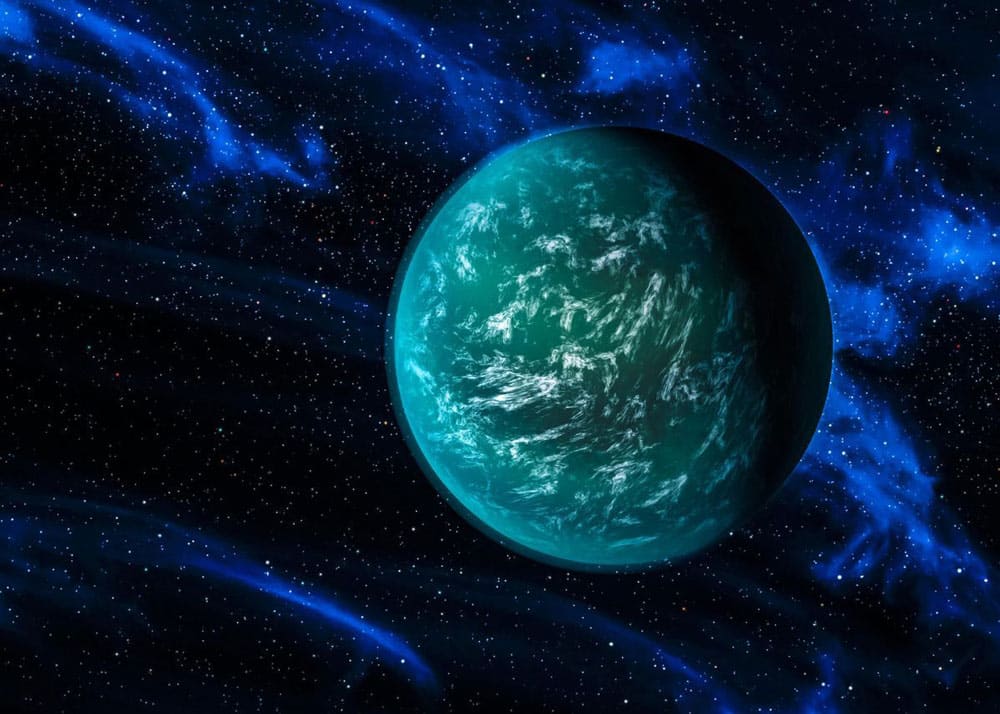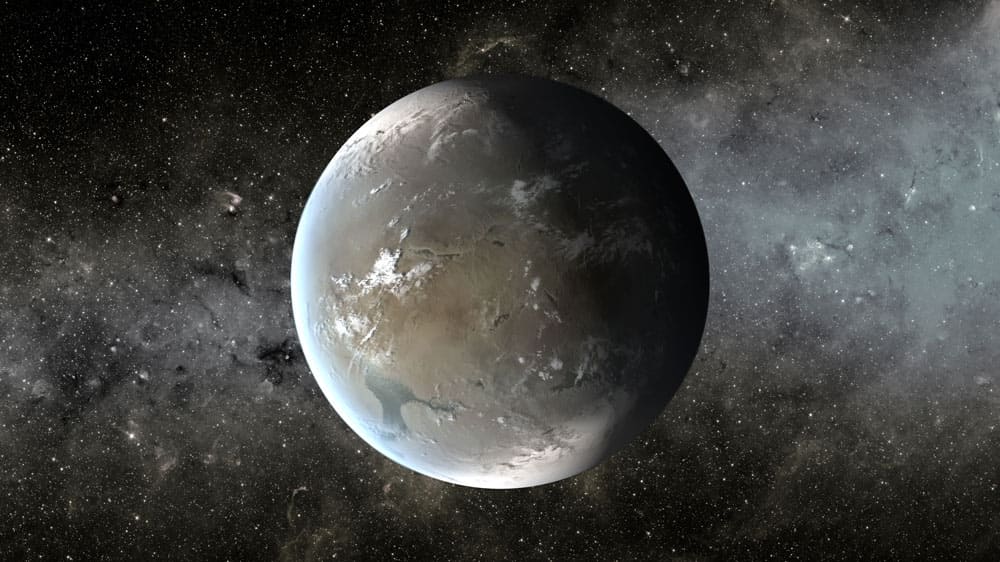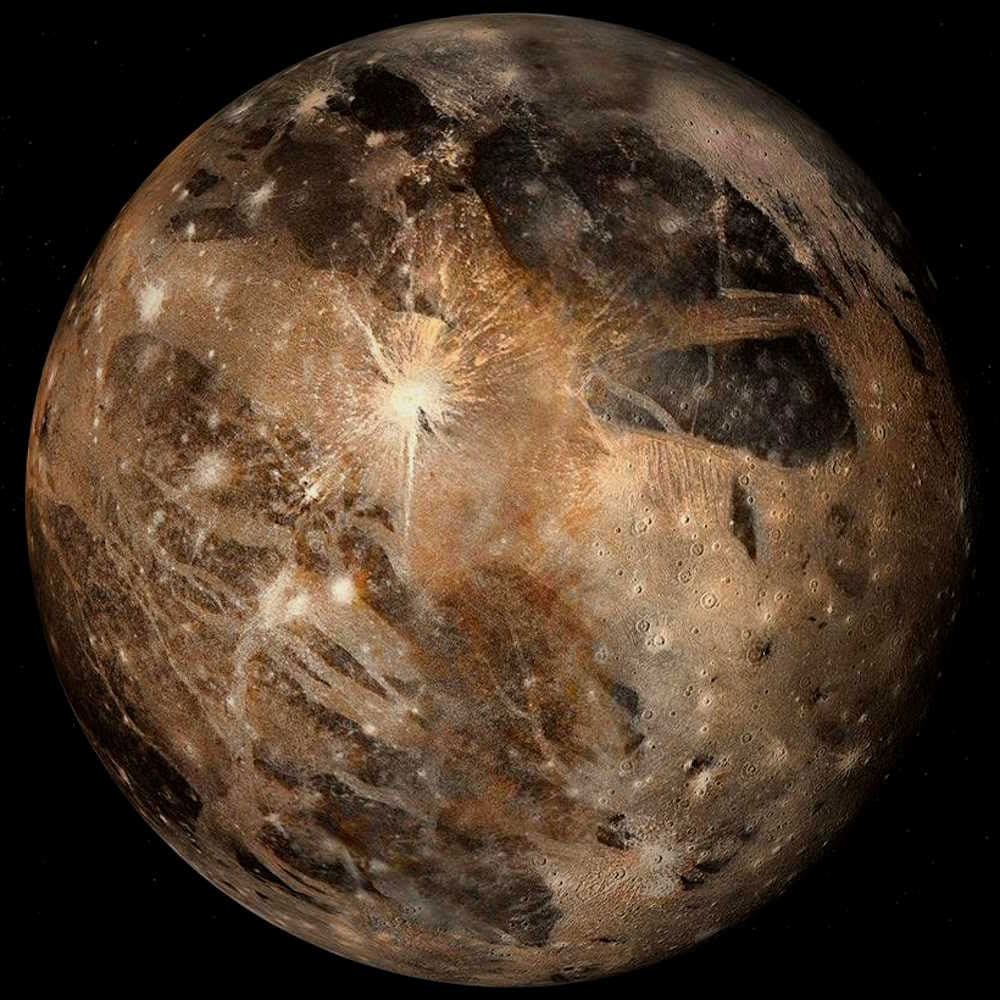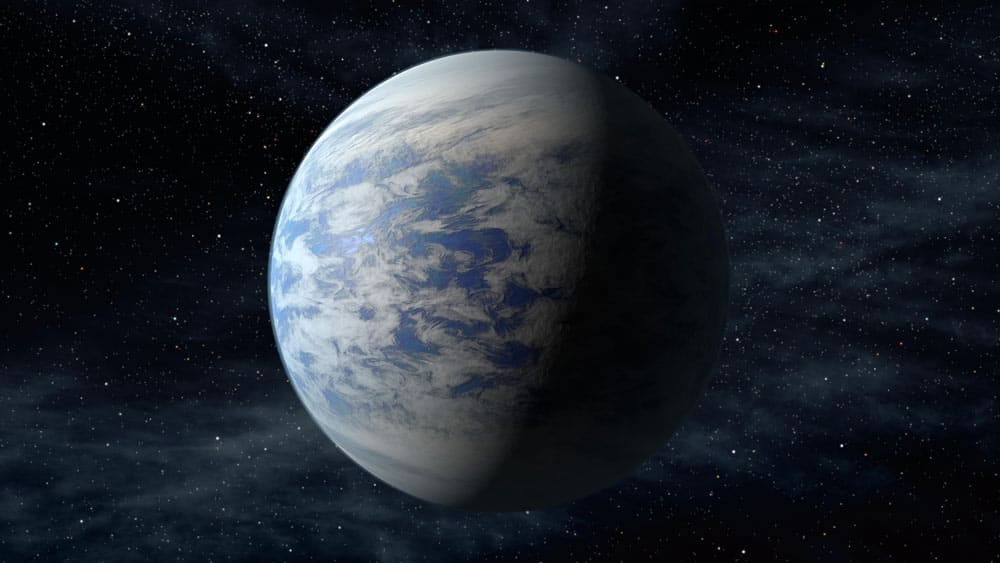In recent years, astronomers have been actively searching for a new kind of planet that is suitable for the existence of extraterrestrial life – oceanic planets. Oceanic planets are hypothetical space objects covered with liquid water, which can occupy a significant part of their surface. Such worlds can provide unique conditions for the development of life, especially if we take into account that water is considered one of the key conditions for the emergence and maintenance of biological processes. Despite the fact that at the moment oceanic planets are mostly presented as objects of science fiction literature and research, the study and search for such worlds is a fascinating topic for astronomy and space science. Here are 10 interesting facts about oceanic planets.
1. Oceanic planets are rocky planets with lots of liquid on or below the surface.
Gas giants like Jupiter can never be oceanic planets. Most of their mass is in the form of gas, and their atmospheres make up 90% of the planet. In the solar system, only Earth, Mars, Venus, and Mercury are rocky planets. However, Earth is the only ocean planet among them. Despite its name, water is not the only liquid that can form an ocean planet. In fact, the lava that covers Jupiter’s satellite Io and the methane that forms oceans on Saturn’s satellite Titan are also accounted for.
2. Scientists believe there may be oceans on Kepler-22 b.
Kepler-22 b is an exoplanet located 587 light-years from Earth. It is 2.4 times larger than Earth. Scientists indicate that the planet may have water in large quantities, and therefore it can be considered an ocean planet. This exoplanet is located in the constellation of Swan.

3. Kepler-452 b is another example of an exoplanet that may have oceans.
Kepler-452b is another exoplanet located 1,402 light-years away from Earth. It is also older than our solar system, being over 6 billion years old. Its parent star is also 10% brighter and 20% larger than our Sun. Some scientists speculate that because of its Earth-like orbit, Kepler-452 b lost its oceans millions of years ago and is now too hot to support life. Other scientists disagree because of the larger size of Kepler-452 b. This exoplanet is about 50% larger than Earth. This mass compensates for the greater power of the star, so Kepler-452 b may still have oceans, making it a potential ocean planet.
4. Kepler-62 f is the exoplanet most similar to our Earth.
Kepler-62f is an exoplanet located 990 light-years away from Earth. It is also older than our solar system: it is more than 7 billion years old. Its parent star is dimmer and colder than the Sun, and Kepler-62f is farther away from it than Earth is from the Sun. Nevertheless, scientists believe that Kepler-62 f’s large mass (40% more than Earth’s) allows the exoplanet to retain enough heat to remain an ocean planet.

5. The mantle of Neptune’s satellite Triton is composed of water.
Because volcanoes on Triton spew ice and water vapor, scientists have concluded that its mantle is composed entirely of water. Telescopes have also detected unknown solids in the erupted materials. Because of Triton’s low mass and temperature, scientists suspect that there is an icy mantle beneath its surface. Triton’s distance from the Sun and its large mass are also similar to Earth’s. Triton has a hot metallic core that triggers reactions in the watery mantle. In turn, this drives cold volcanoes to the surface.
6. Pluto’s mantle is also composed of water.
Pluto’s crust is undergoing slow geologic changes despite no signs of volcanic activity. As with Triton, scientists hypothesize that Pluto’s mantle is composed of water heated by radioactive elements in the metallic core. The heat drives water processes, which causes geologic changes in Pluto’s crust.
7. Ganymede may be composed of ice and rocks.
Ganymede is the largest satellite of Jupiter. Studies of images of Ganymede taken by telescopes and probes show that instead of one or two layers, the body of this satellite has many more. These layers alternate between rock, ice, and liquid water, although scientists also believe there is evidence of a large underwater ocean on Ganymede. However, based on what is known about Ganymede’s mass, if it does have an underwater ocean, it will have more water than all of Earth’s oceans combined.

8. Scientists suspect that Jupiter’s satellite Europa is made of ice.
Based on telescope and probe images, scientists suspect Europa’s crust is made of ice. Jupiter’s satellite Europa has the smoothest surface of anybody in the solar system, which supports this theory. Geysers and water vapor eruptions point to a possible ocean lying 100 kilometers below the Earth’s crust. Scientists hypothesize that the heat causing the water processes comes from a variety of sources. First, heat from Europa’s core, second, gravitational effects from the satellite’s orbit around Jupiter, and finally, Jupiter’s own radiation.
9. Oceanic planets that are too close to a star lose water.
The heat of the star turns water into vapor, which is then split by ultraviolet radiation. Hydrogen escapes from the atmosphere, leaving oxygen behind. This process takes billions of years, but ends up leaving behind an oxygen-rich, hydrogen-poor waterless planet. This is why scientists do not consider the presence of oxygen on exoplanets a sure sign of life.
10. Oceanic planets with too much water will have difficulty supporting life.
If water covers the entire planet, the lack of land leads to a deficiency of phosphorus in the surrounding water. On Earth, phosphorus entering the sea with precipitation helped microorganisms such as plankton to evolve and grow. These, in turn, have served as the basis for other organisms. At a more extreme level, if the oceans become too deep, the water pressure becomes too great, which inhibits plate tectonics. This suppresses underwater volcanoes, which bring in key elements and chemicals necessary for aquatic life.


